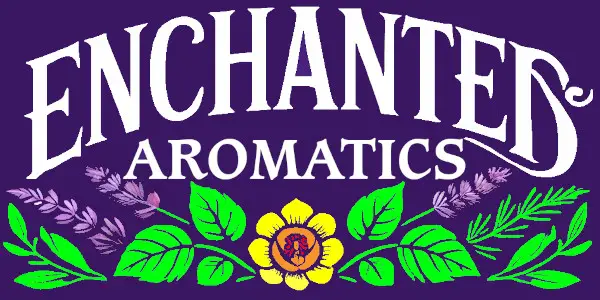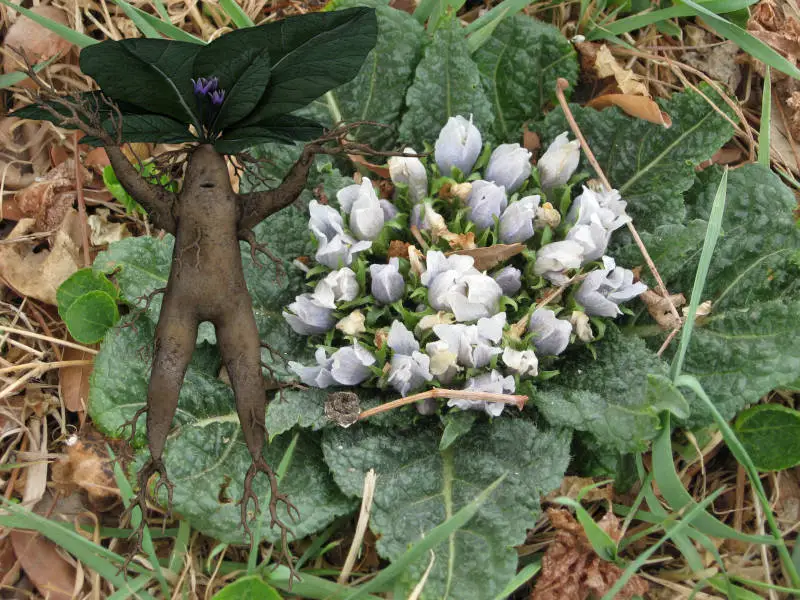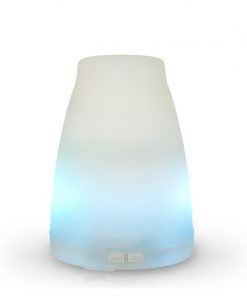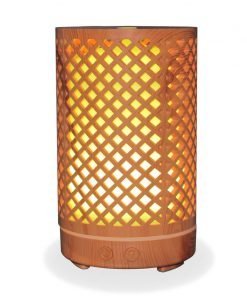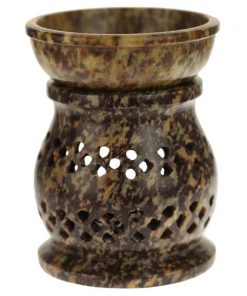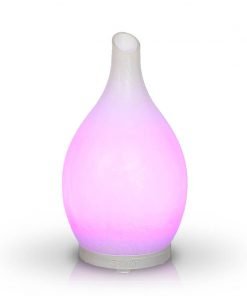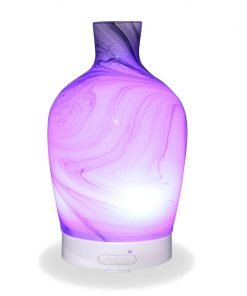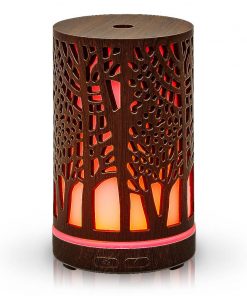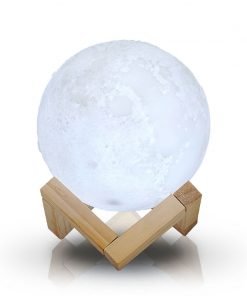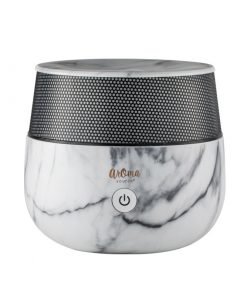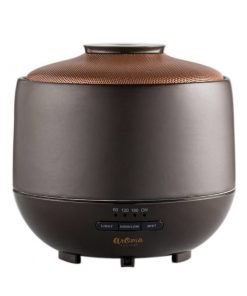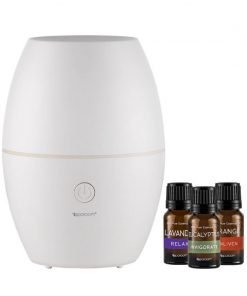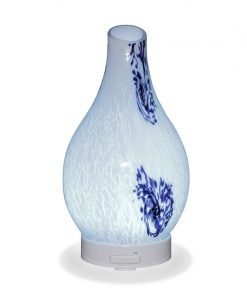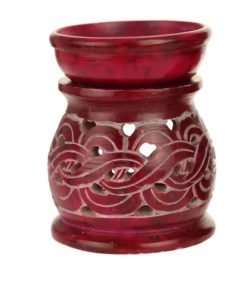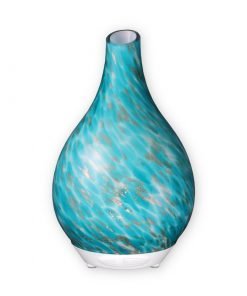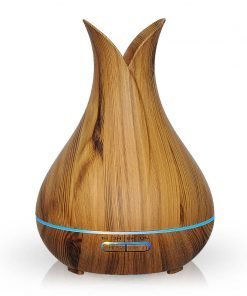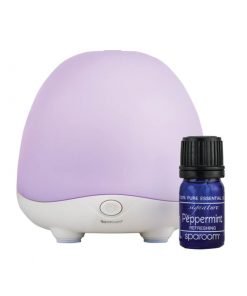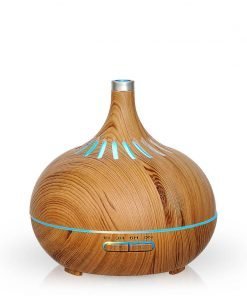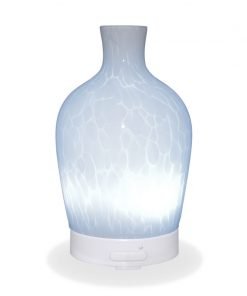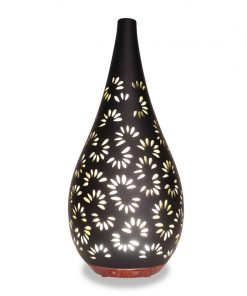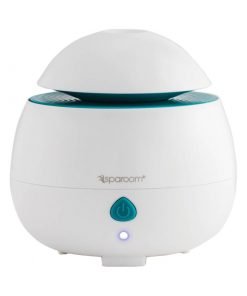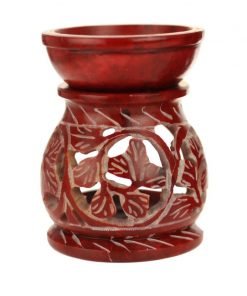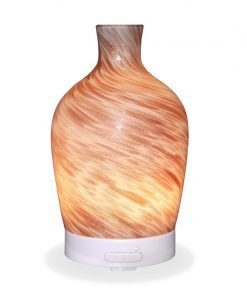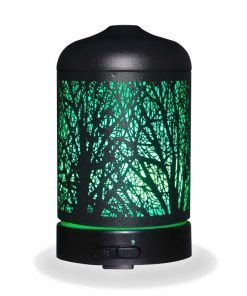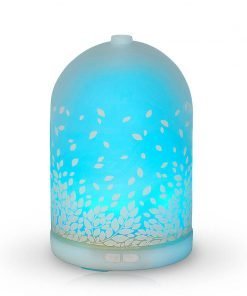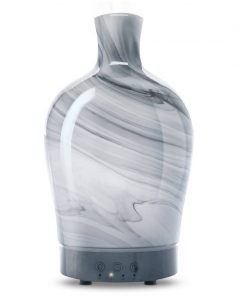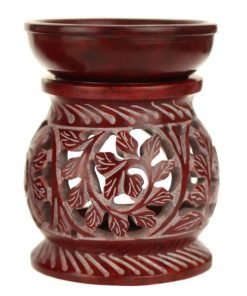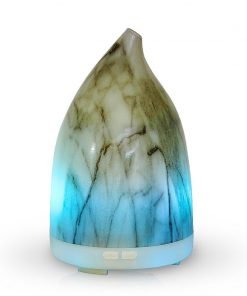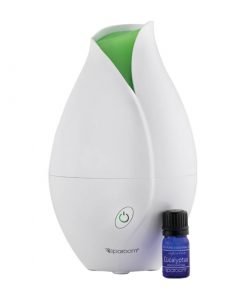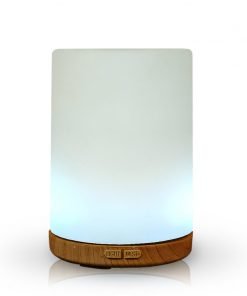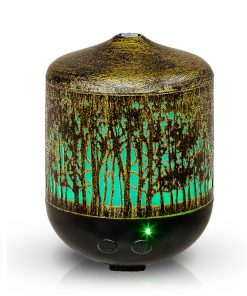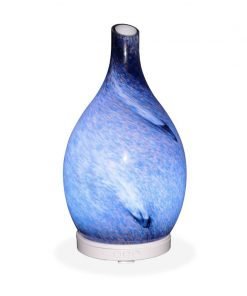Magical Properties, General
What Are The Magical Properties Of Mandrake Root?
By Mark Piatt
Updated on April 18, 2023
When you make a purchase through our links, we may earn commissions from Amazon and other retailers. You can learn more about our affiliate and privacy policy here.
In magickal circles, the magical properties of mandrake root are often used for binding spells, uncrossing spells, flying ointments, hexes, and protection from possession. A mandrake root can be displayed on a fireplace mantle to bring success, wealth, and joy into your home.
Mandrake root is sometimes used to amplify magickal workings and can aid in exorcisms. Mandrake has the power to collect negative energy.
Mandrake oil is used to purify and anoint candles used in rituals.
You can use mandrake root as an amulet or talisman for love magick, money magick, and warding off evil spirits.
Carrying a mandrake root in your pocket shaped like the opposite sex can help attract your desired lover to you.
You can add mandrake root to your spells and charm bags and you can also burn it over charcoal to use as an offering to a God or Goddess.
Because of its smell, mandrake root is used in the production of ritualistic perfumes.
It is said that just smelling the fruit can alleviate headaches and insomnia.
Over 6000 years ago, Egyptians called mandrake root “The water of life” and used it to improve health, vigor, and longevity.
The root was considered so powerful that it would be placed in a visible corner of a home. Candles would be lit in its honor and vows would be made to the mandrake plant.
As a general rule, mandrake root has magickal and spiritual powers that include 4 main properties and powers (although there are more):
- Fertility
- Flying Ointments
- Protection
- Uncrossing
If you wish to preserve a mandrake root for later use in magick, use the following procedure:
- You will need a mandrake root, a jar, and alcohol.
- Cut the root into small pieces.
- Place the mandrake root pieces into the jar and fill the jar with alcohol.
- Every night for two months, open the jar and stir the contents while asking for blessings from the mandrake root.
- After the two months are up the extract is ready for all your spells using mandrake root.
- *** DO NOT SKIP A NIGHT OF STIRRING ***
- Alternatively, you can grind dry mandrake root and use the powder in your spells and rituals.
If you wish to purchase mandrake root already chopped up, here is a 1-pound bag of Wildcrafted Chopped Mandrake Root from Amazon.
If you are interested in purchasing whole mandrake roots, I suggest you try looking on Etsy, as there are usually sellers on there selling whole mandrake roots.
DISCLAIMER:
The information provided in this article is for educational purposes only. Occult properties of herbs and essential oils are provided for historical interest only. For possible treatments of physical or mental diseases, please seek a trained and licensed health professional. Enchanted Aromatics is not responsible for any adverse side effects resulting from the use of any suggestions, products, preparations, or procedures mentioned or from the following historical uses of herbs and essential oils.
What are the magical properties of mandrake root?
Mandrake root (Mandragora officinarum) is one of the world’s oldest narcotics and hallucinogens. Mandrake is a perennial that belongs to the Solanee family, which is known as the nightshade family. This family consists of over 3,000 species and includes potatoes, bell peppers, tomatoes, eggplants, and tobacco.
Mandrake root goes by a variety of names including:
- Devils apple
- Herb of Circe
- Ladykins
- Mannikin
- Womandrake
The plant has a pale violet-colored flower that then matures to toxic yellow, pineapple-scented fruits called “The Golden Apples of Aphrodite” and “The Apples of Jinn“.
For magick, the mandrake root is one of the earliest documented plants used and had mysterious and demonic qualities.
The use of mandrake roots can be found in Mesopotamian, Greece, Old Hebrew, Roman, Egyptian, and Arabic texts and cuneiform writings.
When ingested in small quantities, mandrake root has psychosomatic effects that can induce out-of-body experiences and hallucinations.
Mandrake root has long been associated with fertility, probably because the root can sometimes resemble the body of a person.
Mandrake gets its name because the root looks like a man, and the word “drake” is derived from the Middle English name for dragon – Drake, which alludes to its magical powers.
Most importantly, early witches used the mandrake root in many of their rituals because it contains powerful tropane alkaloids such as scopolamine, hyoscyamine, atropine, and mandragorine.
Alkaloids found in mandrake roots have the following characteristics.
- Scopolamine – known as an antimuscarinic. These types of substances block the effects of certain natural substances on the central nervous system. Can cause drowsiness, dilated pupils, sore throat, sweating, dry mouth, and disorientation.
- Hyoscyamine – This substance can relax muscles in many organs such as the stomach, intestines, bladder, kidney, lungs, and gallbladder.
- Atropine – Can cause blurred vision, dry mouth and eyes, photophobia, confusion, headaches, dizziness, fatigue, tachycardia, palpitations, flushing, urinary hesitance, water retention, constipation, abdominal pain and distention, nausea, vomiting, loss of libido and impotency.
- Mandragorine – Can cause drowsiness, delirium, seizures, hallucinations, and coma. High dosages can cause death.
Because of its toxicity, mandrake root is known as a baneful herb. Baneful herbs are herbs that can cause severe illness or death in the hands of a person who means to harm someone.
But many baneful herbs have various spiritual, alchemical, astrological, symbolic, and medicinal properties.
As a result of baneful herbs having many uses in magick and medicine, they walk a fine line between being beneficial and being deadly.
As an example, when used in sufficient quantities, mandrake root can induce unconsciousness. For this reason, it was used as an anesthetic for surgery.
Here is a list of the most popular baneful herbs used in magick:
- Aconite
- Belladonna
- Datura
- Elder
- Foxglove
- Hemlock
- Hellebore
- Henbane
- Lily of the Valley
- Mandrake Root
- Mistletoe
- Snapdragons
- The Little Apple of Death
- Wormwood
- Yarrow
- yew
For many people, their first encounter with mandrake root was a result of Harry Potter and the Chamber of Secrets.
In the story, Harry Potter and the other students were in a greenhouse where they were being given a lecture by Professor Sprout about how to properly re-pot mandrakes.
To prevent themselves from becoming deaf when they pull the screaming plants out of the soil, they would have to wear earmuffs. This belief is based on actual folklore.
It is believed that because the mandrake root was so sought after in their Mediterranean habitat, a story developed to scare people from harvesting the root.
The story goes that a demon inhabiting the root would scream if you pulled the root out. The screams would kill you.
Over the years, various rituals were created to avoid the “mandrake curse”, as it was known. The most famous ritual involved using a dog tied to the root so the dog could pull the root out of the ground during moonlight.
In Louisiana, the Louisiana Act No 159 signed into law on June 28, 2005, makes 40 plants illegal when intended for human consumption. Mandrake is on this list. It is legal to cultivate, possess, and harvest mandrake in Louisiana if it is grown strictly for aesthetic, landscaping, or decorative purposes.
Contemporary modern-day Pagan religions such as Neopagans, Wicca, Odinism, and German Revivalists still use mandrake roots in their rituals.
If you are interested in the subject of using toxic plants as part of your magickal repertoire, you should learn as much as you can about that specific plant and about using toxic plants in general.
A good starting point would be the following book “Pagan Portals – By Wolfsbane & Mandrake Root: The Shadow World Of Plants And Their Poisons” by Melusine Draco.
About magick
There is always more than one way to accomplish your magickal goals. Using the magickal properties of mandrake root is but one tool from an arsenal of tools and techniques you should be using.
Magick is a spiritual and natural force that everyone possesses and has nothing to do with evil.
Magick is about aligning oneself with natural forces to manifest an intention.
Magick comes from the ability to channel the powers of hidden energies all around us. Different traditions have different names for this energy such as mana, chi, or prana.
While reading this article, keep in mind there is always more than one way to accomplish your magickal goal.
Take these suggestions we give you as a base, and make them your own.
Magick works!
If you are interested in learning more about how you can use herbs in your magickal rituals, check out the following book by Ally Sands “Plant Magic for the Beginner Witch: An Herbalist’s Guide to Heal, Protect and Manifest“.
Mandrake Root Correspondence
- Mandrake is considered masculine. But mandrake does form in male and female varieties. The female variety has a heavy scent and appears darker with slender leaves compared to its male counterpart. The male variety has a sweeter smell.
- The vibration of the mandrake root is considered part of the fire element.
- Mandrake is associated with Mercury.
- The astrological sign of Mandrake is Scorpio.
- Mandrake is associated with the Beid el Jinn, which are dangerous spirits in Islamic mythology. Mandrake is also associated with Circe, who is the daughter of Helios (the Sun God) and Perse (a sea nymph). Mandrake is also one of the sacred plants growing in the Goddess Hekate’s garden. Mandrake is sacred to Aphrodite.
- Chakra that works with mandrake: Root Chakra and Third-eye.
Essential Oil Diffusers Here At Enchanted Aromatics
4 Magical Properties and Powers Of Mandrake Root
In old-world magic, using plants and herbs is one of the oldest magical tools known. Over many years, through observation and use, people have learned the magickal properties of plants.
Following are some examples of how you can use mandrake root in your daily magick and spiritual rituals.
Can mandrake root be used in fertility rituals?
The fact that the mandrake root resembled a human body was a sign of its fertility potency. The use of mandrake being used for fertility issues can be traced back to the book of Genesis in the Old Testament. The Hebrew word for mandrake means love plant.
In the book of Genesis, Jacob’s two wives (who are sisters) compete to provide him with children with the help of a mandrake.
Mandrake root was used as a powerful aphrodisiac to increase sexual desire. Of course, if the dosage was not just right, it could just as easily put you into a coma or even kill you.
In ancient Greece, a mandrake love potion would be made by steeping the root in wine and vinegar.
In Arabic, the mandrake fruit is known as “The Devil’s Apple”. Mandrake root got this name because it is believed it can inflame a man’s love.
Some Asian cultures have used mandrake root to help ensure that conception occurs.
Female midwives and healers would use mandrake for fertility issues and it was also used for childbirth.
To assist in fertility, a mandrake root shaped like a baby would be placed under a women’s pillow.
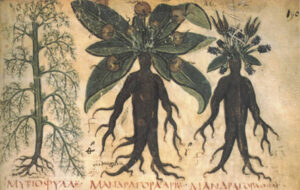 Or if you are a man, you can carry a mandrake root shaped like a female to win the woman’s heart desired (or a woman could carry a mandrake root shaped like a man for the same purpose).
Or if you are a man, you can carry a mandrake root shaped like a female to win the woman’s heart desired (or a woman could carry a mandrake root shaped like a man for the same purpose).
Mandrake is certainly not the only herb used in fertility spells. In fact, there are many other herbs used for fertility rituals that are much safer to use than mandrake.
Herbs that have traditionally been used in fertility spells include:
- Angelica root
- Birch
- Catnip
- Chickweed
- Cinnamon
- Cornflower
- Coriander
- Daffodil
- Elderberries
- Fennel
- Ginger
- Hazel
- Hops
- Horsetail
- Lavender
- Mandrake
- Mint
- Mistletoe
- Motherwort
- Mustard
- Nettle
- Oak
- Parsley
- Pine
- Poppy
- Strawberry leaves
- Red clover
Is mandrake used in a “flying ointment”?
Mandrake has been used as an ingredient in some flying ointments that witches would use during their practice of witchcraft.
Flying ointments are hallucinogenic ointments long used by witches that would allow them to visit faraway places and travel at terrific speeds.
The ointments would also allow spirits to visit the witches or allow the witch to turn into a beast.
Traditionally, flying ointments are applied to the scent glands since many of the substances found in flying ointments would cause intestinal distress.
Also, applying the ointments on the scent glands would allow the ointment to be quickly absorbed by the human body.
It is believed that witches flying on brooms can be traced back to a pagan ritual in which rural farmers would leap and dance on poles, pitchforks, or brooms in the light of the full moon to help encourage their crops to grow.
Witches would often create flying ointments and salves to give them the ability to fly. By straddling their brooms while naked, the ointments applied to their private areas or on their brooms would be quickly absorbed into their skin, and off they would go on their hallucinogenic trips.
Recipes for flying ointments are difficult to come by. According to witch trial transcripts of the time, Christian courts believed that the flying ointment recipes were passed down by Satan himself.
The best source that discusses recipes is Reginald Scot’s well-known “The Discoverie Of Witchcraft of 1584“. This 686-page document is written in Old English and is difficult to read, but it makes for some interesting reading.
If you are interested, you can purchase a reprint of this document from Amazon.
Link to The Discoverie Of Witchcraft of 1584.
I would like to note that there is some disagreement on whether mandrake was used in flying ointments.
Hallucinogenic plants used by witches in their flying ointments include:
- Hemlock
- Henbane
- Mandrake
- Nightshade
- Thornapple
- Wolfsbane (monkshood)
Other non-toxic herbs and plants were used for various reasons in their flying ointments.
As an example, parsley would sometimes be added to the mix because parsley is considered a plant of evil omens, making it unlucky to either plant or transplant.
In the past, some people would not plant parsley because they were afraid that there would be a death in the family within 12 months.
The only safe time to plant parsley was while church bells were ringing.
Flying ointments consisted of harmless ingredients, toxic ingredients, and “Satanic Only” types of ingredients such as the fat of yoong (young) children.
Can mandrake root be used for protection?
Carrying a mandrake root as an amulet or charm was thought to be enough to protect the bearer from spiritual possession and to bring good health. Mandrake can also be used to protect one from unethical users of magick.
Protective magick is about guarding and regaining your power by creating stronger boundaries to feel safe.
Protective magick can help you clarify what you want and do not want in your environment.
Mandrake roots were given to soldiers going into battle, both for their magickal protection and their ability to render a person unconscious in case emergency surgery needed to be performed on them.
Herbs that were traditionally given to soldiers for protection include:
- Calendula flower petals
- Corn poppies
- Datura
- Henbane
- Horehound
- Pokeweed
- Mandrake
- Nightshade
- Pennyroyal
- Valerian
- Yarrow
Keeping a mandrake root in your home is said to protect your home.
In Germany, the mandrake root was called the alraun, which was a plant familiar. A plant familiar is a spirit that was considered a close friend. This entity would protect and assist witches, usually for a price.
This alraun was used as a powerful amulet that was often passed down through family generations. This amulet was considered so important and sacred, that it would often be stored in silk and placed in a box.
In some belief systems, the alraun would be removed from the box 4 times a year and washed with wine or brandy. This liquid would then be sprinkled around the home to be used as a protective ward.
In other belief systems, the alraun would be wrapped in a white robe usually made of silk, with a golden girdle. The alraun would be bathed every Friday, otherwise, it would start shrieking for attention.
Of course, possessing an alraun in the 1600s could result in you being prosecuted for using witchcraft and sentenced to death. Don’t believe me? In 1630, three women in Hamburg Germany were convicted and sentenced on this charge and hanged.
Even today, you can still purchase the alraun to be used in the same way. You will find plenty of examples on Etsy.
If you are interested in learning about the top essential oils that are used for magickal protection, read our following article “16 Essential Oils For Protection“.
Can mandrake root be used in uncrossing rituals?
Mandrake root can be added to your uncrossing rituals to boost the power of the uncrossing ritual. you will usually use the oil from the mandrake root combined with other oils when performing an uncrossing ritual.
a crossed condition is any condition that keeps a person stagnant and unable to move forward.
The basic premise behind an uncrossing ritual is to remove any negative energy or unhelpful attachments and unhelpful blocks that are holding you back from your higher self.
Before performing any type of spiritual work, performing an uncrossing ritual can be beneficial to help clear negative energies.
In some uncrossing rituals, you will apply your anointing oil to your body or third eye.
There are many, many ways to perform uncrossing rituals.
Your uncrossing ritual may be as simple as relaxing your mind and building a metaphysical shield around you to something more complex that involves using candles, incense, herbs, baths, meditation, praying, or chants.
A combination of rosemary, lemon, and mandrake makes an excellent uncrossing oil that you can use to anoint any thresholds into your home and all the windows.
Other herbs that are popular to use for uncrossing rituals include:
- Eucalyptus
- Hyssop
- Lemongrass
- Myrrh
- Peppermint
- Pine
What does mandrake smell like?
Mandrake has a sharp fruity smell like a strong red apple. The small yellow fruits smell like pineapple. Others say the fruit smells like spiced custard scented with vanilla.
The fragrance of mandrake comes from a complex cacophony of 55 principal odoriferous compounds.
Conclusion
Mandrake is a highly magickal and dangerous herb but can be used in many other scenarios.
Mandrake is a powerful narcotic and for many hundreds of years, mandrake was used as a pain killer. Unfortunately, ingesting mandrake can lead to death, so treat mandrake with great respect.
But even today, mandrake is used to treat a variety of ailments such as stomach ulcers, asthma, hay fever, whooping cough, and rheumatism, to name a few conditions.
But with so many medications that do the same and will not kill you, it is better to rely on modern medicines to treat these conditions.
If you are interested in learning about some general magical properties of essential oils, check out my article “15 Magical Properties of Essential Oils“.
If you know of other magical properties of mandrake or different ways in which you use mandrake on your spiritual journey, we would love to hear from you so we may incorporate what you share in this article.
If you decide to try using mandrake in your rituals, please be careful and take proper precautions.
